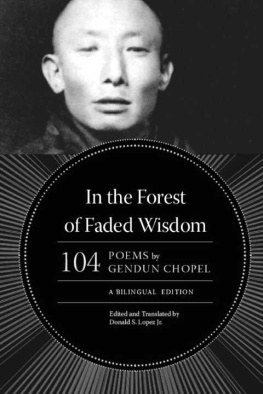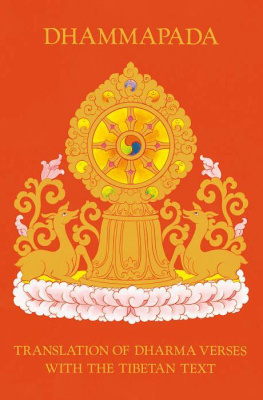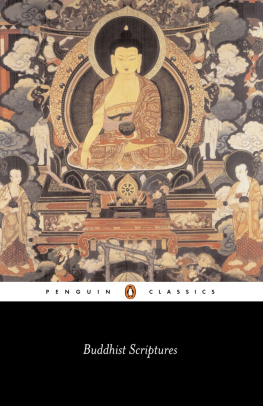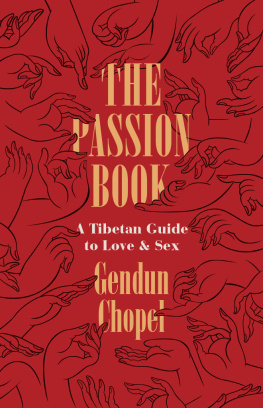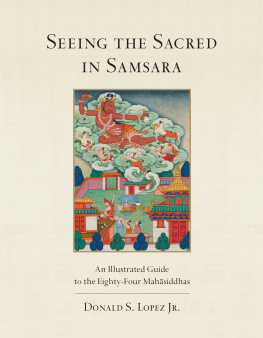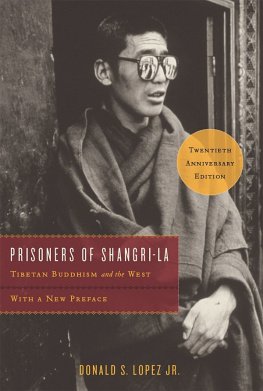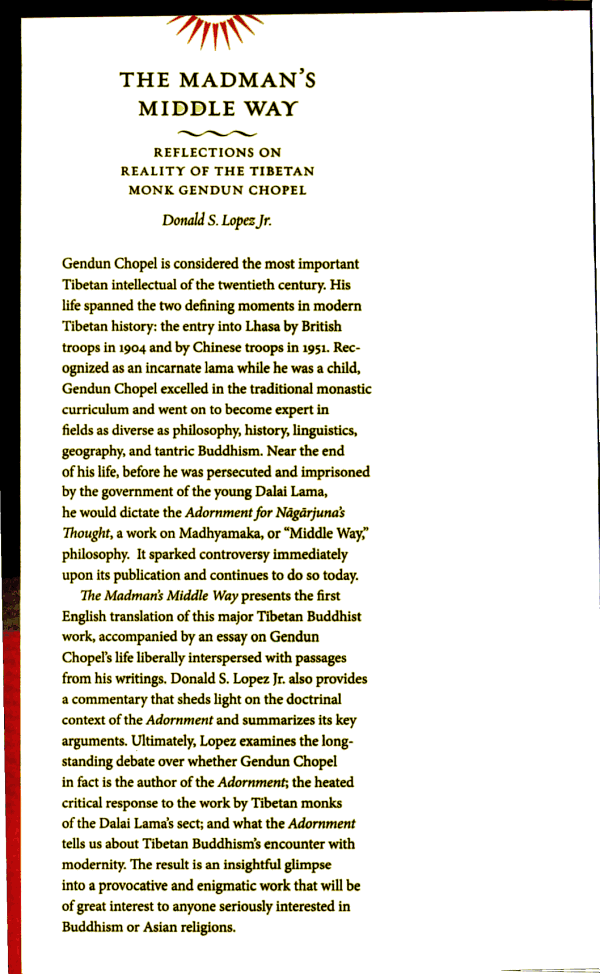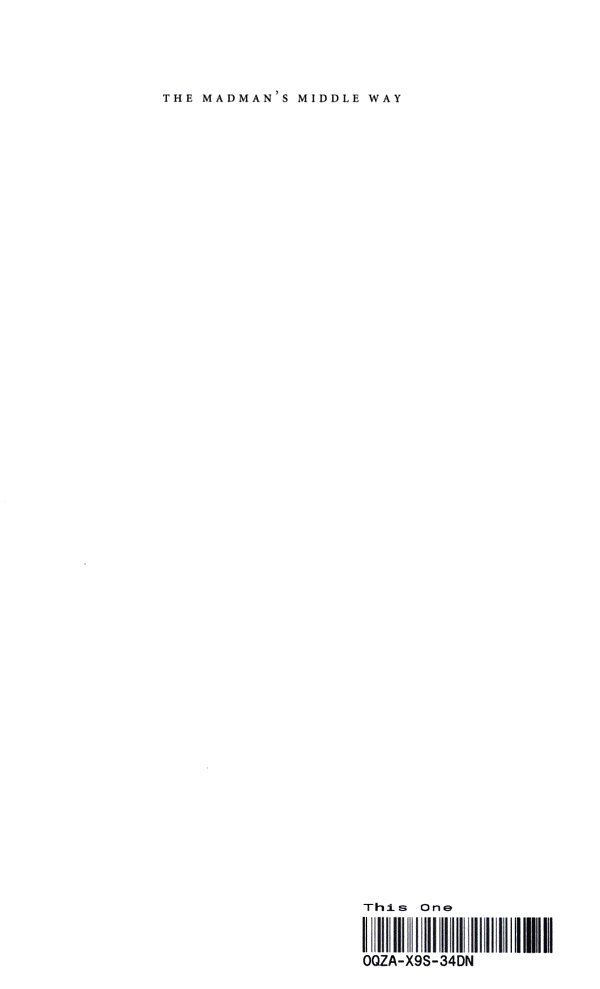BUDDHISM AND MODERNITY
A series edited by Donald S. Lopez Jr.
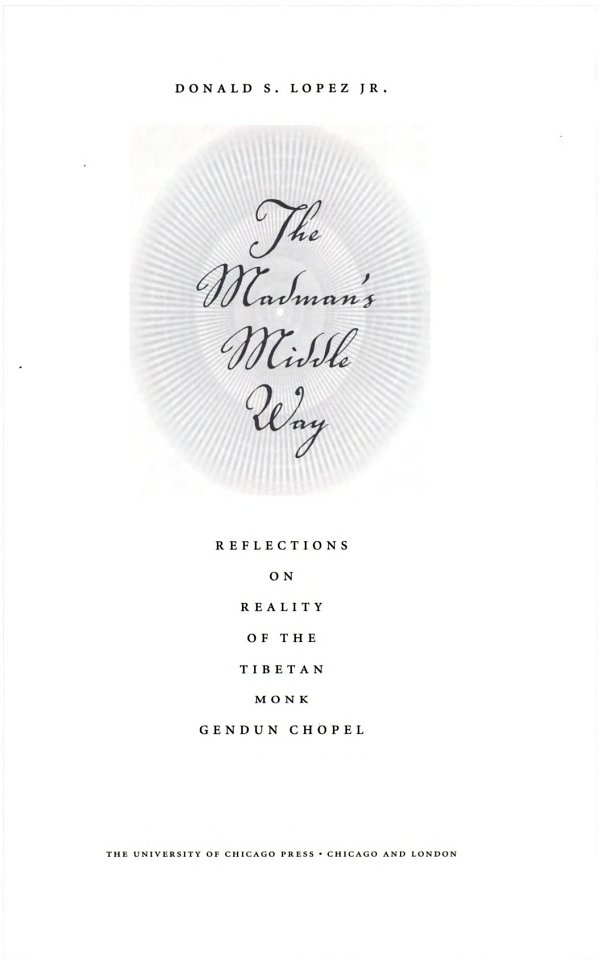

Perface
In January 1979,I was visiting Sarnath in northern India, the site of the Buddha's first teaching, the place where he first "turned the wheel of the dharma." The Buddha is said to have encountered his five fellow ascetics in the Deer Park at Sarnath, and to have taught them the four noble truths. Today the area is still a park, with the ruins of a large stupa and the remnants of a monastery.
There was a dense morning fog, and as I walked into the park the huge stupa loomed suddenly out of the mist. The fog began to burn off after several clockwise circumambulations of the stupa, and the monastery came into view. There is archaeological evidence of a monastery from the third century BCE; the visible ruins date for the most part from the twelfth century. As I walked through the ruins, I stopped in front of what appeared to be the remains of a door, framed in white stone, with the lintel missing. A young Tibetan monk was standing nearby, and we exchanged greetings. He then said, in Tibetan, "This is the place where the Buddha stood when he first turned the wheel of the dharma." I was skeptical; although I knew little about the archaeological record, I was unaware of any identification of the precise site of the first teaching, but I politely responded with the Tibetan equivalent of "Oh, really?" The monk said, "Yes, Dge 'dun chos 'phel said so." I was vaguely aware of who Dge 'dun chos 'phel was. In my graduate courses at the University of Virginia, Jeffrey Hopkins once mentioned that Dge 'dun chos 'phel had written that if the pure lands had been designed by the Tibetans, they would have been awash in buttered tea. I knew that Dge 'dun chos 'phel had written a sex manual. I knew that he had spent some time in India in the first half of the twentieth century. And I knew that he had written a book on Madhyamaka philosophy entitled Adornment for Ngrjuna's Thought (Klu sgrub dgongs rgyan), but I knew little more about it than its title. I took a photograph of the door, thanked the monk, and continued on my way.
I was in India at that time on a Fulbright fellowship, doing dissertation research on a school of Madhyamaka philosophy, especially as it was understood in the Dge lugs sect of Tibetan Buddhism. I was reading two famous doxographies of the school, one from the seventeenth century, one from the eighteenth, with Tibetan monks residing in the refugee Dge lugs monasteries in southern India.
I thought little about Dge 'dun chos 'phel for the next decade as I published my dissertation and then wrote a book about the Heart Sutra. In 1985, Heather Stoddard published a biography of Dge 'dun chos 'phel in France entitled Le Mendiant de I'Amdo. In a review essay published in 1989 in the Journal of the Royal Asiatic Society, David Seyfort Ruegg, the doyen of Madhyamaka studies, wrote,
A judgement as to whether GCh was a powerful and penetrating thinker or simply a gifted scholastic will have to await a detailed study of his controversial study on the Madhyamaka compiled by his disciple Zla ba bzang po, the above mentioned Klu sgrub dgongs rgyan. ... An assessment of this work will be no easy undertaking because it will be necessary to determine what belongs in this text to GCh himself and what might have been added by his disciple and editor (the compiler Zla ba bzang po), because of the inherent difficulty of such a work that exploits the resources of Tibetan Madhyamika dialectics, because of the extensive Indo-Tibetan philosophical background that it presupposes, and because of the critical responses and refutations it has already called forth. An evaluation of this work will no doubt be of some importance for our understanding of the role of Middle Way philosophy in modern times.1
This description led me to want to study and perhaps translate the text. My friend Elizabeth Napper kindly gave me her copy, and I began to read it. I made references to the text in an article for Professor Ruegg's Festschrift, where I considered the views of Tsong kha pa, famous "founder" of the Dge lugs sect, and Dge 'dun chos 'phel on the vexed question of whether the Madhyamaka holds any philosophical position. I became intrigued by the text; the author clearly knew the Dge lugs scholastic tradition very well, but wrote about it in a way I had never encountered, either in substance or in style. It lacks the ploddingly systematic structure of most Tibetan scholastic literature ("With regard to the first topic, there are three parts, the first of which has five sections"). Instead, upon initial reading, it had very much the sense of being disconnected statements, perhaps uttered over a number of sessions, jumping from one topic to another without warning. Indeed, its style reminded me more of the Philosoph ical Investigations than of any Buddhist text I had read. Adding to the difficulty of the work, both for the reader and the translator, is that it assumes a complete knowledge of Dge lugs scholastic vocabulary, especially in the areas of pramana and madhyamaka, as well as the logical choreography of the debating courtyard.
1. D. Seyfort Ruegg, "A Tibetan's Odyssey: A Review Article," Journal of the Royal Asiatic Society 2 (1989): 309.
During my years at the University of Virginia, I had been trained to read Dge lugs scholastic philosophy, but had for the most part lost interest in it during the decade after I earned my degree there. Dge 'dun chos 'phel's text seemed to provide an opportunity for me to once again make use of the training I had received in Dge lugs scholasticism, albeit to translate a text that mocked that scholasticism. It seemed like the perfect project. I received a fellowship from the National Endowment for the Humanities in 1992 and completed a translation of the text over the next year. In conversations with friends and colleagues in Tibetan Buddhist studies, I learned that a number of people, both in Europe and the United States, had set out to translate the text, but had given up for one reason or another. They said it was difficult, that it was cryptic in places, that whether Dge 'dun chos 'phel even wrote it was in dispute. All these things were quite true; the text was replete with mind-bending philosophical points, and I was uncertain about numerous points in my translation. It was also an awkward size: the translation was about one hundred pages in typescript, too long for an article, too short for a book. And then there were the refutations. Two prominent Dge lugs scholars had written detailed refutations of the text, each far longer than the text itself. These works were models of high Dge lugs scholasticism, exactly the kind of literature I was hoping to put behind me with the translation.


